Have you ever tried a cheese so delicious that you can’t wait to put it on your next cheeseboard or incorporate it into your culinary experiments? If only you could remember the name. It’s on the tip of your tongue. Did it start with the letter K?
In this article, we’ll cover 20 amazing cheeses that start with K and take a close look at some of their flavor profiles so that you can pair them with the right dishes and drinks at your next event.
Kabritt

Agassiz, British Columbia, Canada, is where you can find Kabritt cheese.
©LeonU/iStock via Getty Images
British Columbia, Canada, has a surprising European cheese culture. They are known for the delicious Amsterdammer, which pays homage to Dutch cheesemakers and Kabritt.
Kabritt is a French-style goat cheese with just a hint of blue for extra flavor. It has a thick, natural rind and hard white inside for an earthy, rich taste. Pair it with a dry white wine or local ale to bring out the natural flavors.
Kadchgall
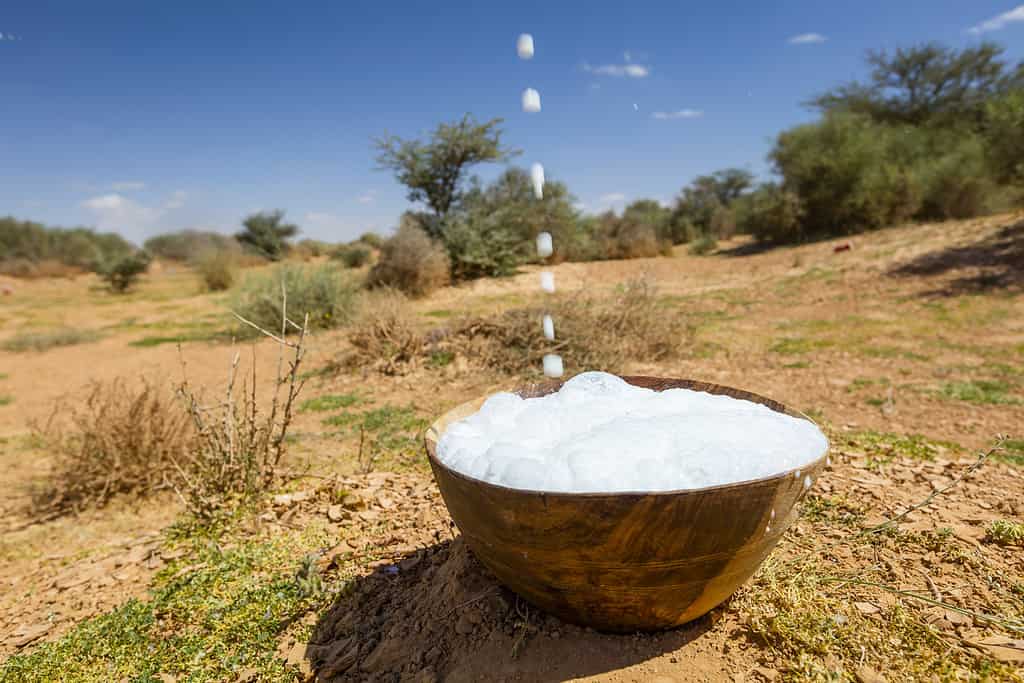
Cheesemakers use sheep’s milk or camel’s milk for this cheese.
©Mustapha GUNNOUNI/iStock via Getty Images
Kadchgall originates in Pakistan and Afghanistan and is made with clotted sheep or camel’s milk, depending on the availability. The texture is hard with a rubbery squeak, with a mild sweet and salty flavor. Locals report that the sheep’s milk version is preferable to the camel’s milk version.
Pair this cheese with a dry white wine to balance the sweet undertones.
Kaltbach

Kaltbach cheese processing takes place in caves.
©martinrlee/iStock via Getty Images
The Swiss are known for their incredible craftsmanship in several areas, and the Cavemasters at Kaltbach are no exception. There are a few types of Kaltbach cheese, including Gruyere and Emmentaler.
Their refinement process, which takes in sandstone caves, sets these cheeses apart. Cavemasters monitor the conditions and refine the aging process for 12-14 months per cheese loaf. Flavors range from nutty and earthy to tangy and fruity, depending on the batch.
Pair Kaltbach Creamy with bright, fruity white wines and Kaltbach Gruyere with earthy, oaky reds.
Kanterkaas

Kanterkass is a Dutch gouda with cumin.
©Richard Villalonundefined undefined/iStock via Getty Images
For a flavorful Dutch cheese, you can’t go wrong with Kanterkass. Dutch cheesemakers add cumin to this hard cow’s milk cheese for an aromatic, flavorful option that packs a punch.
Kanterkaas has a Protected Designation of Origin (PDO), which means only cheese formulated within the region following traditional practices can bear the Kanterkaas name (similar to Champagne). You can also swap this out for the more flavorful Komijnekaas or the Swedish version, Kummin.
Pair this flavorful cheese with a fruity red, like a Malbec or Shiraz.
Kashar

Kashar is an Albanian version of Kashkaval cheese. This cheese is sold under this name in the United States.
©Esin Deniz/iStock via Getty Images
Some cheeses are the same but have subtle regional differences; Kashar is one of these cheeses.
Kashar is a village in Albania that shares the name with this type of cheese, also known as Kashkaval or Kasseri. While it has different regional names throughout the Balkans, cheesemakers in the United States also package it under this name.
This cheese has a mild, spicy aroma and buttery flavor. Pair this cheese with a Zinfandel to bring out the flavors.
Kashkaval
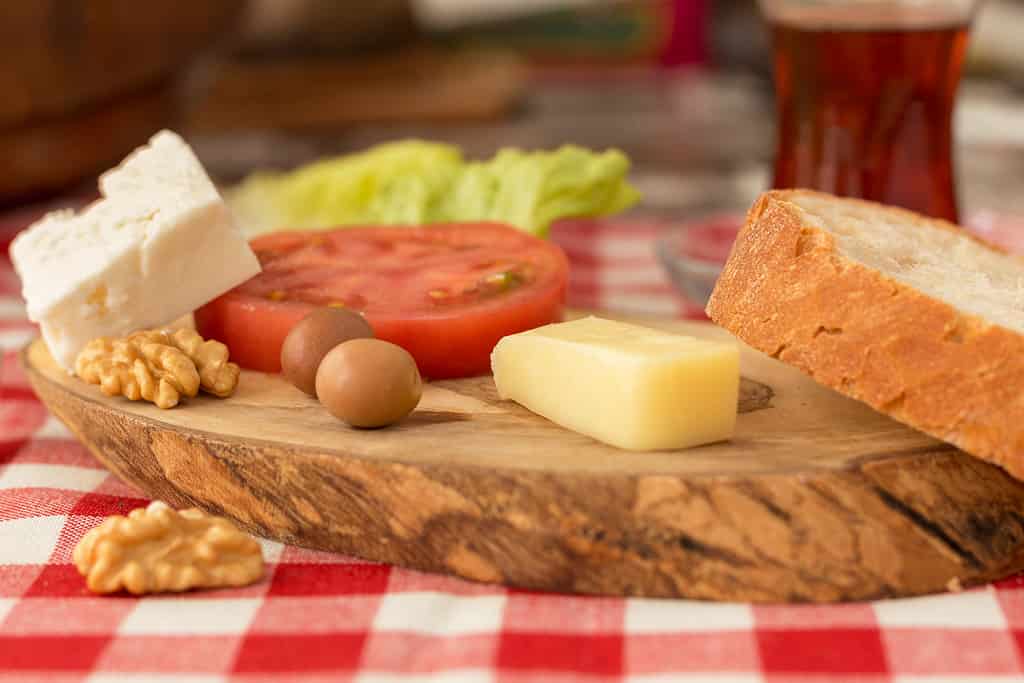
Kashkaval is often served with Turkish breakfast dishes.
©vuralyavas/iStock via Getty Images
As mentioned, Kashkaval is also known as Kashar and Kasseri. This iteration of the cheese is Turkish and has a creamy, buttery flavor. While cow’s milk is most common, sheep’s milk also works.
Regional differences in production practices create a unique flavor and texture from country to country. However, a Zinfandel or similar wine is still the best option with these cheeses.
Kashta

Kashta is a clotted cream that tastes great in desserts and pastries.
©Melhem Gharazeddine/iStock via Getty Images
While Kashta is a type of cream, its production is similar to ricotta cheese. Simply blend the cheese curds with sweet cream to make a unique product that’s a favorite in many Lebanese homes.
Kashta has a rich, creamy texture and mild, sweet flavor. Pair with a fruity Merlot to get the best blend of flavors when enjoying this dessert cheese.
Kasseri
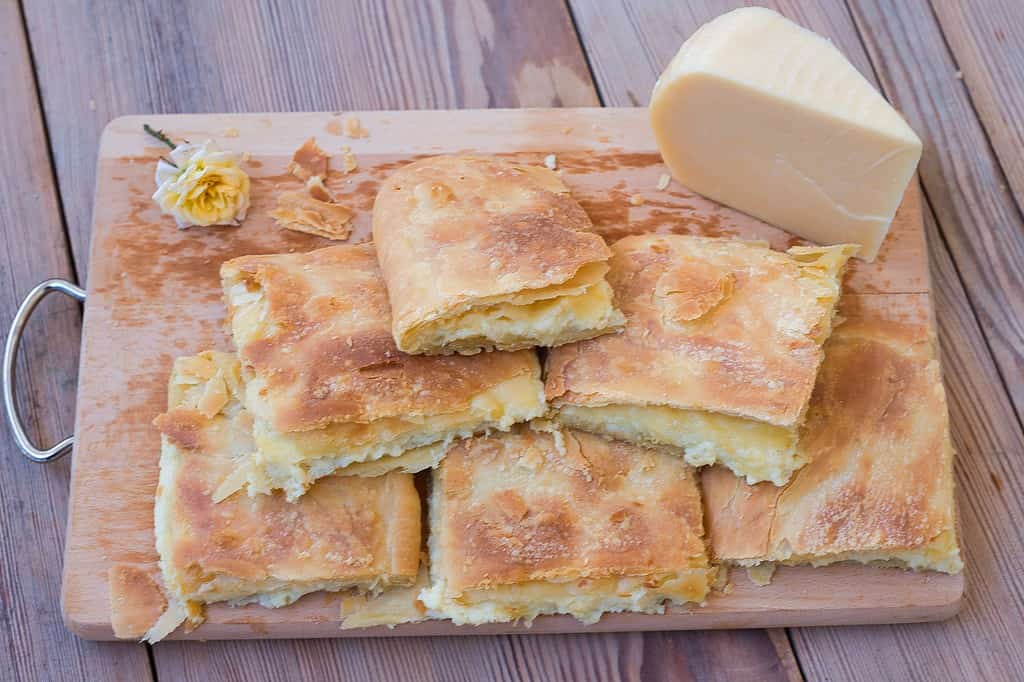
Authentic village cheese pie made with handmade village foil and Kasseri cheese.
©Wirestock/iStock via Getty Images
Kasseri is the Greek iteration of Kaskaval and Kashar. Cheesemakers use sheep or cow’s milk for this semi-hard to hard cheese, depending on what’s available. It has a mild, salty taste and cheesy aroma. This cheese melts well, making it ideal for pastries, sandwiches, and entrees.
Pair this mild cheese with a fruity, aromatic red wine to bring out the flavor. Agiorgitiko is a Greek wine that goes perfectly with Kasseri.
Kefalograviera
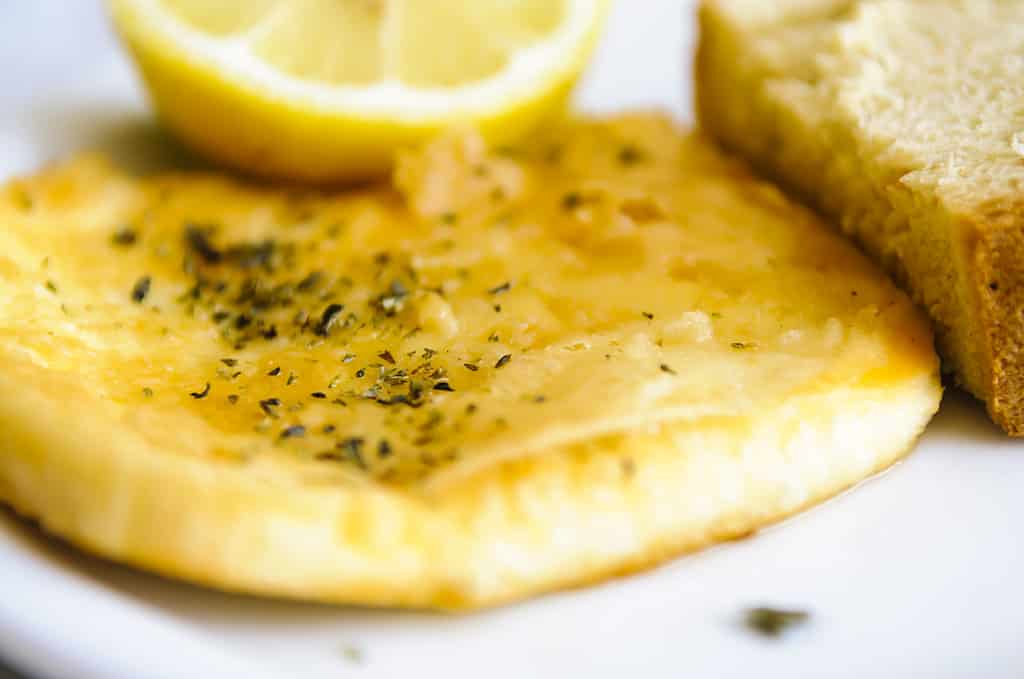
You may find Kefalograviera in Saganaki, a pan-seared cheese dish served with lemon and bread.
©Stephen Barnes/iStock via Getty Images
One of the better-known Greek cheeses, Kefalograviera is hard, salty, and delicious. This cheese blends two other famous Greek cheeses: Kefalotyri and Graviera. You may taste Kefalograviera in Saganaki, a fried cheese dish that makes an excellent appetizer.
Pair this cheese with a nice Pino Grigio or Cabernet Sauvignon to balance out the flavors.
Kefalotyri
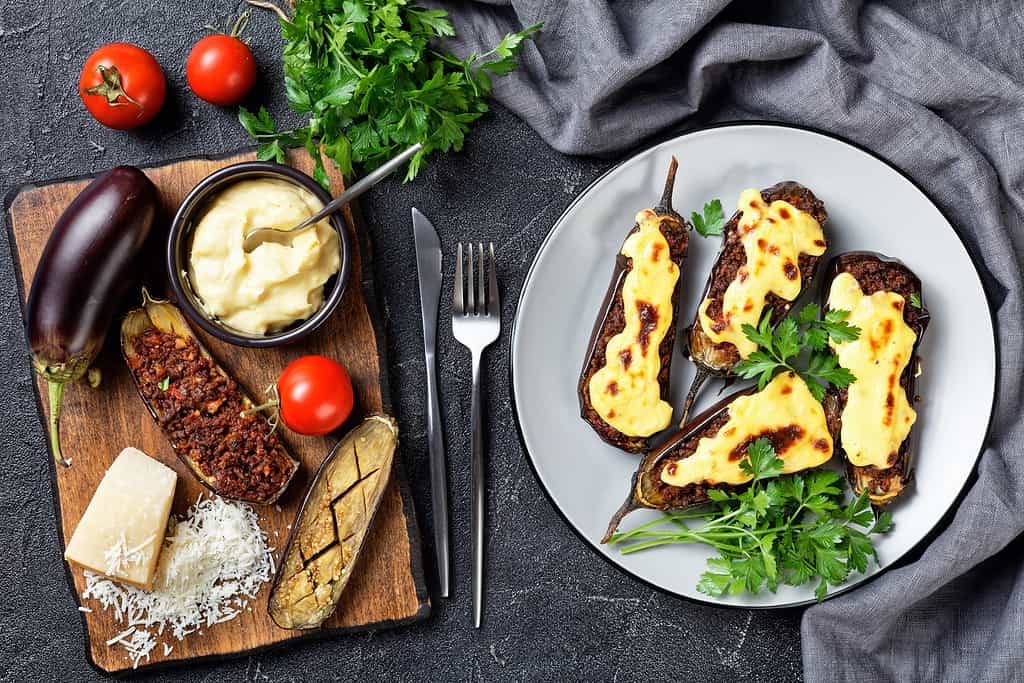
Kefalotyri is a popular ingredient in Greek cuisine. It’s a great alternative to Kefalograviera.
©from_my_point_of_view/iStock via Getty Images
Another one of the well-known cheeses that start with K, this cheese is similar to Kefalograviera but with more intensity; it’s saltier, cheesier, and more aromatic. However, the use and flavor pairings remain unchanged.
Use this as an alternative to Kefalograviera when making Saganaki, or shred it over pasta and meat dishes for an extra punch of flavor.
Kefir Cheese
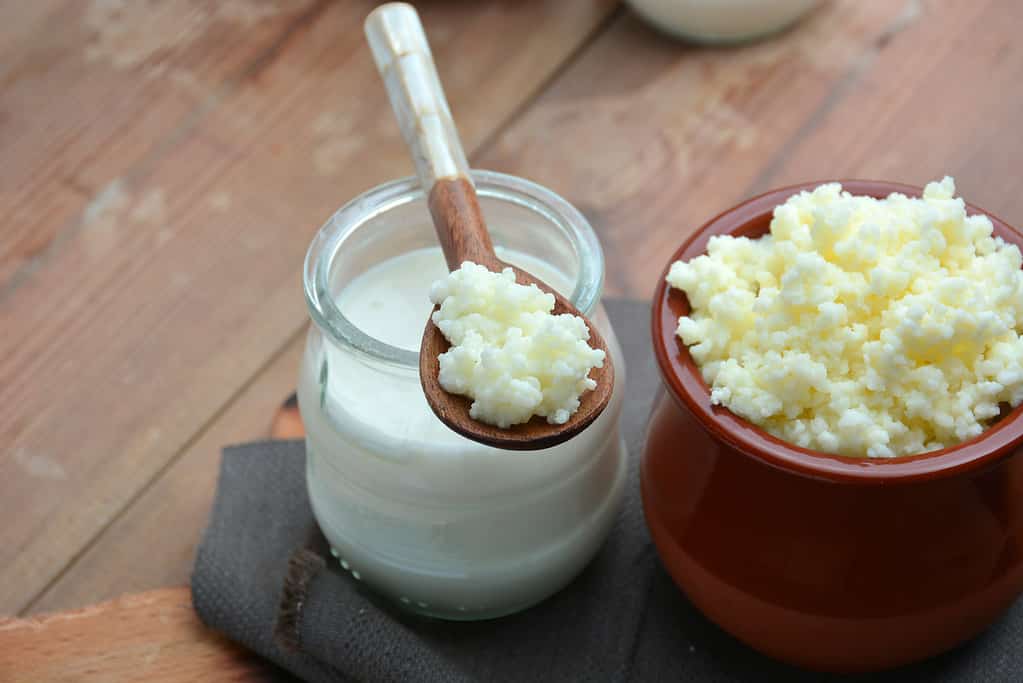
Kefir is a fermented milk product that you can use to make cheese.
©istockphotoluis/iStock via Getty Images
There are a few types of kefir cheeses, with blue varieties being the most common. If you want to try making cheese at home, this is one of the easiest ways to start.
The texture and taste vary depending on the processing time and flavor inclusions. Some popular options include herbs, pepper, and garlic.
Komijnekaas
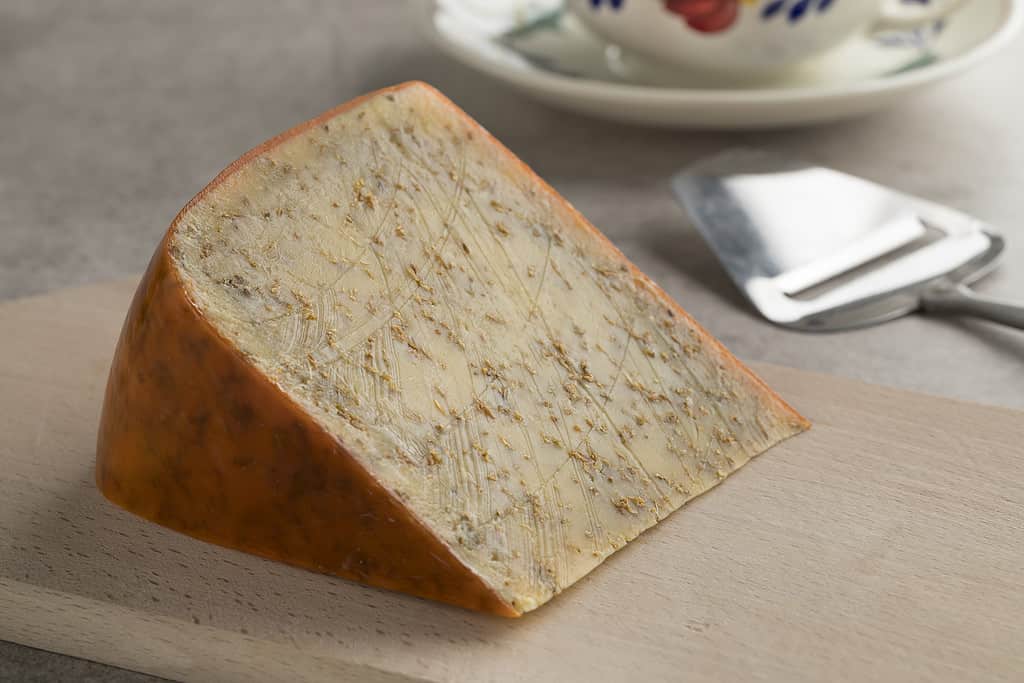
Komijnekaas packs a punch of flavor with cumin and caraway.
©PicturePartners/iStock via Getty Images
This cheese is another Dutch gouda with cumin added that’s similar to Kanterkaas. However, Komijnekaas also contains caraway seeds for extra flavor and texture. The firm texture and bold flavor pair well with crusty bread on a cheese board or when added to a sandwich for an extra punch of taste.
Pair this cheese with a Malbec or Shiraz, or swap out the wine for a hearty ale.
Koryciński
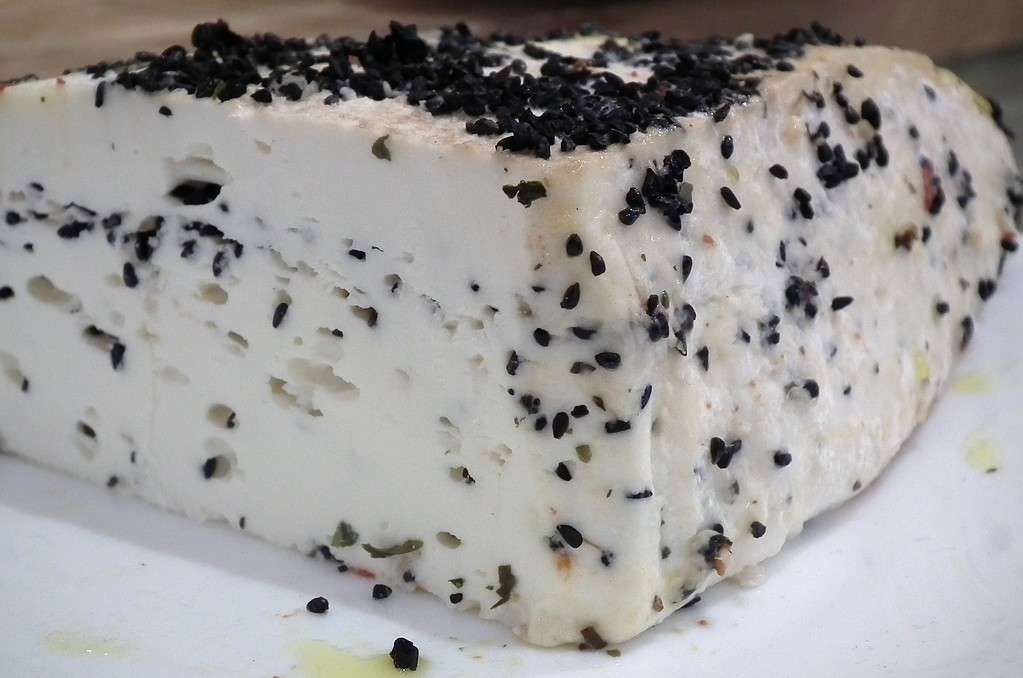
Cheesemakers add different herbs and spices to make their own blend of this Polish cheese.
©MOs810 / CC BY-SA 4.0 – License
Koryciński is a traditional Polish cheese that may be a little different, depending on the cheesemaker. Cheesemakers add their unique blend of inclusions, from herbs to seeds, to make the recipe their own.
This cheese is semi-hard to hard and aromatic and is a rennet cheese that follows traditional processing techniques. Pair this cheese with Pinot Noir, crusty bread, and pickles or pickled onions for a tasty snack.
Cheeses That Start With K: A Summary
| Cheese Name | Cheese Type | Cheese Origin |
|---|---|---|
| Kabritt | Hard; Goat’s Milk | Canada |
| Kadchgall | Hard; Sheep’s Milk or Camel’s Milk | Pakistan, Afghanistan |
| Kaltbach | Semi-Hard to Hard; Cow’s Milk | Switzerland |
| Kanterkaas | Hard; Cow’s Milk | Netherlands |
| Kashar | Hard; Cow’s Milk or Sheep’s Milk | Albania, United States |
| Kashkaval | Semi-Hard to Hard; Cow’s Milk or Sheep’s Milk | Turkey |
| Kashta | Soft; Cow’s Milk | Lebanon |
| Kasseri | Semi-hard to Hard; Cow’s Milk or Sheep’s Milk | Greece |
| Kefalograviera | Hard; Sheep’s Milk | Greece |
| Kefalotyri | Hard; Sheep’s Milk | Greece |
| Kefir Cheese | Soft to Semi-Hard; Cow’s Milk | United States |
| Kenne | Soft; Goat’s Milk | United States |
| Kernhem | Semi-Soft; Cow’s Milk | Netherlands |
| Klosterkase | Semi-Hard; Cow’s Milk | Germany |
| Komijnekaas | Hard; Cow’s Milk | Netherlands |
| Koryciński | Semi-Hard to Hard; Cow’s Milk | Poland |
| Kugelkase | Soft; Cow’s Milk | Austria |
| Kummin | Hard; Cow’s Milk | Sweden |
| Kwaito | Semi-Hard; Cow’s Milk | South Africa |
| Kāpiti Kikorangi | Semi-Soft; Cow’s Milk | New Zealand |
The photo featured at the top of this post is © Esin Deniz/iStock via Getty Images
Thank you for reading! Have some feedback for us? Contact the AZ Animals editorial team.







